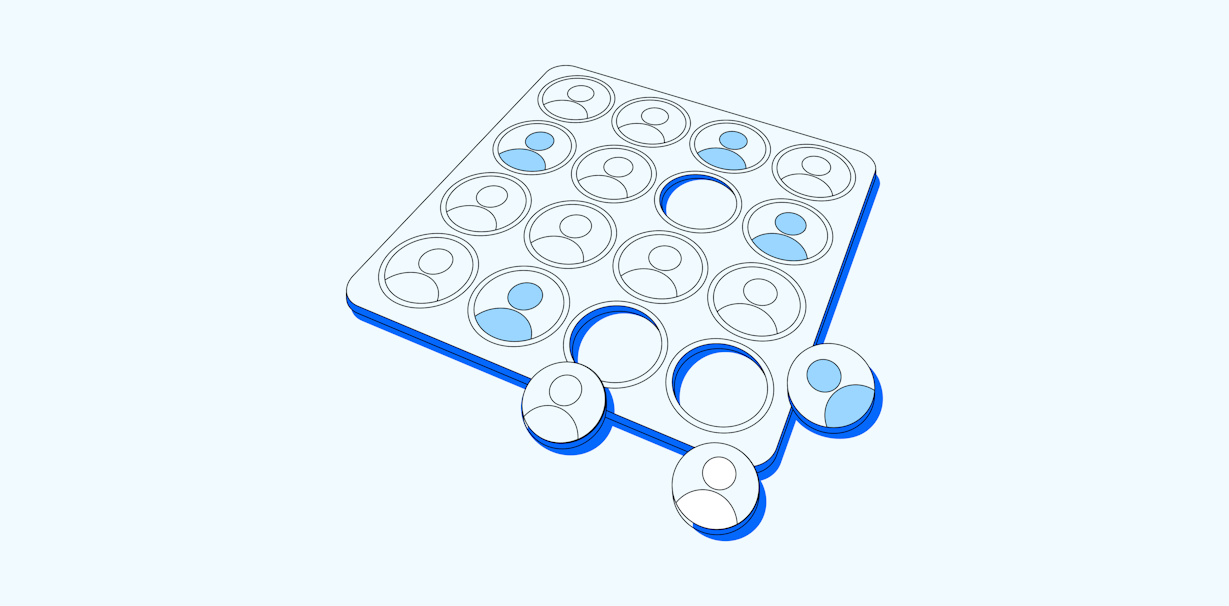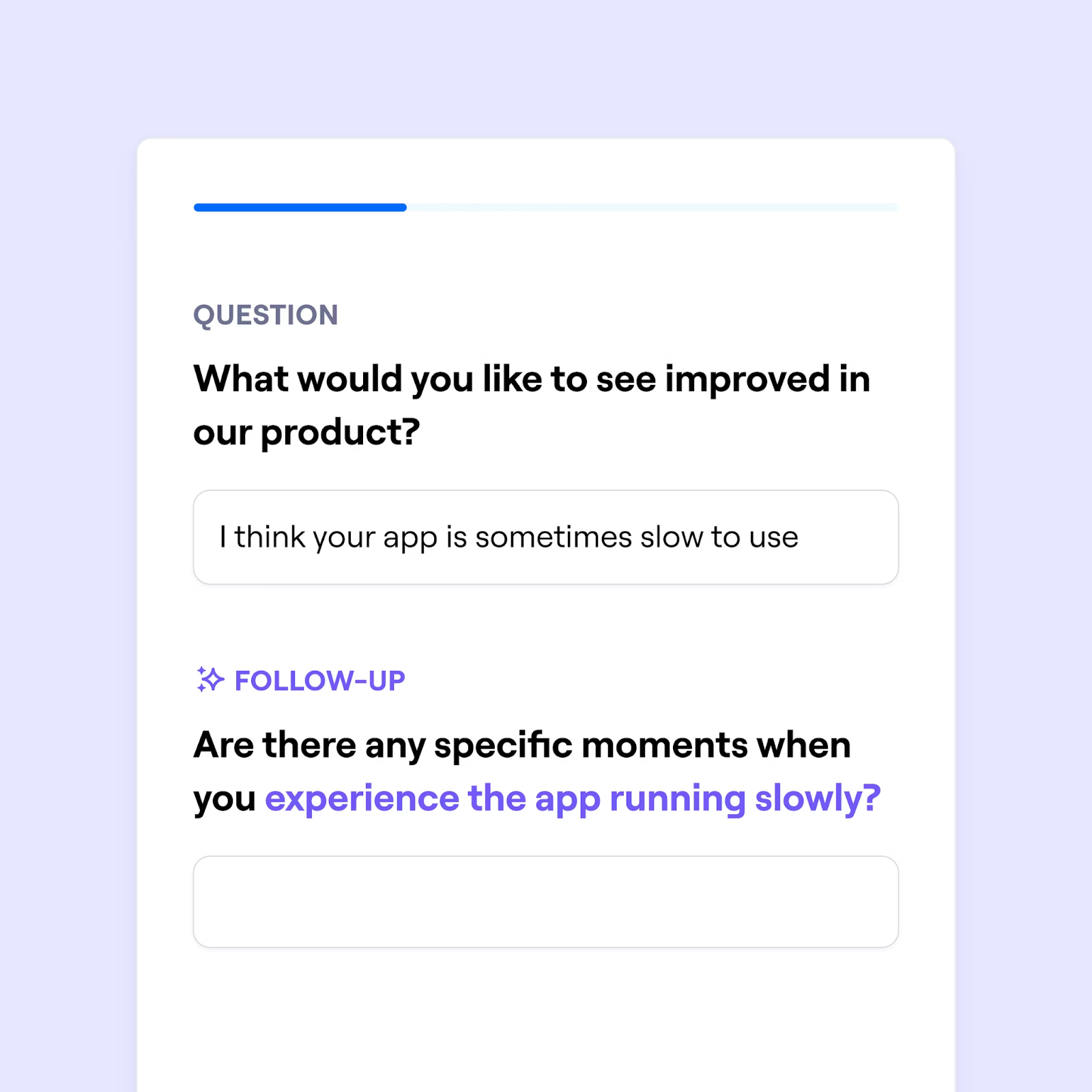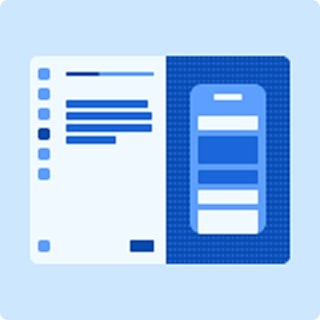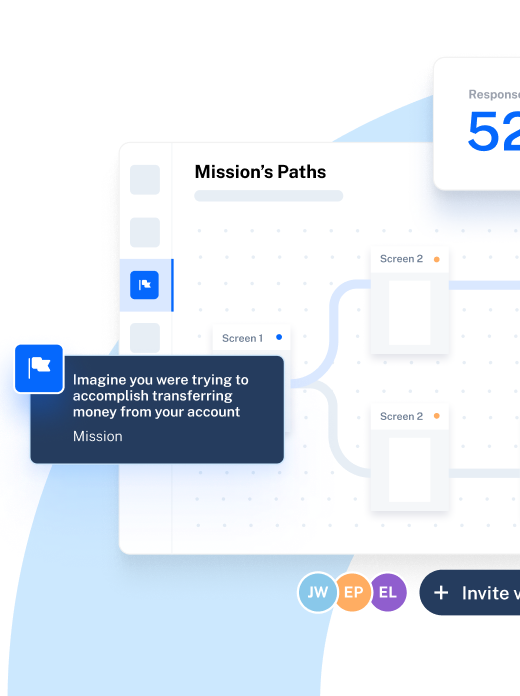
Customer Insights 101: Data-Driven Decisions, User-Centered Experiences
Unearthing customer insights is the first step to building a truly successful product. In this guide, we cover key advice for collecting and actioning customer insights; from how to build a customer insight strategy, to the customer insight tools you need to get the job done.
Chapter 1
Collecting customer insights: 5 Techniques for business and UX success
Customer insights are the backbone of any user-centric organization. They’re how you understand customer needs, identify (and pre-empt) issues in your product or service, and make data-backed decisions that drive business and UX success.
By understanding your customers and their needs, you begin growing a customer-centric organization that is built on data, and centered in positive user experiences–AKA, an organization that effectively retains customers and attracts new ones.
Kicking off chapter one, let’s explore the value of customer insights and how to start collecting them.
What are customer insights?
Customer insights are pieces of quantitative and qualitative data that provide a deeper understanding of your customers and what makes them tick. Customer insights are essential for business growth and success, as they enable businesses to make user-informed decisions across everything from product development to marketing strategies, sales, and customer support.
When you understand what attracted customers to your product and what made them stick around, your business can replicate these tactics and formulas for proven success.
Customer insights vs. consumer insights vs. user insights
Customer insights are often conflated with consumer insights and user insights—but there are some slight differences.
- Customer insights typically refers to the data you collect and analyze from individual, existing customers who fit your Ideal Customer Profile (ICP)
- User insights is a broad term for feedback and insights collected through user research—this might be from existing, new, or potential users
- Consumer insights implies insights from an entire market (e.g. retail or construction), normally collected during market research or competitive product analysis
Difference between customer insights and market research
Customer insights can also sound similar to market research. To clear up any doubts, we called in Haley Stracher, CEO & Design Director at Iris Design Collaborative, for clarification.
Haley said, “Customer insights and market research work hand-in-hand, but they’re very different from one another. Customer insights is all about getting into the minds of your customers. Market research helps understand the market as a whole for business strategy and launch”.
In summary, customer insights focus on understanding your customers’ motivations and pain points, while market research aims to understand the wider market—and competitors—as a whole, so you can hone in on a target market.
Why are customer insights important?
There’s no limit to how you use customer insights to support decision-making in your organization, including to:
- Improve customer retention: Communicating with your customers helps identify what’s working for them and what isn’t, enabling you to:
- Boost customer lifetime value by addressing issues proactively for current and future users
- Predict customer churn by understanding client issues in the lead up to them churning
- Boost acquisition: Current customers can provide great insights into what made them convert in the first place, meaning you can:
- Optimize marketing campaigns to focus on the strategies that attracted existing high-value customers
- Improve sales efforts by understanding where different user personas find value in your product
- Identify business opportunities: Improve your product with feedback from the customers that use it, helping you:
- Improve existing offerings and push sales through, especially for high-value customer segments
- Develop a competitive advantage with new product offerings that support evolving customer needs
- Build stronger relationships and customer loyalty: Talking directly to customers builds a stronger connection and bond between your organization and them, so you can:
- Identify and connect with power users to build stronger customer relationships
- Provide personalized customer experiences for both existing and new users
- Build out customer advocacy and feedback councils
We’ve discussed the what and the why—now it’s time for the how. Here are some of the ways you can get actionable insights from your customers.
How to gather customer insights for product development: 5 Customer insight collection methodologies
For most organizations, conducting remote customer insight collection is the most feasible option to hear from customers.
With customers all over the globe, it can be difficult to run in-person customer research studies that accurately reflect a mix of your customer base. Remote user research—provided you have the right research tool in place—makes it easy and efficient to collect customer insights from a distributed user base (not to mention, it’s a lot less costly, too).
Who should you collect customer insights from?
While you can collect insights from all customers, it’s logical to prioritize gathering feedback from users who make up your ICP, to ensure the data you’re working with reflects your ideal customer type.
Focusing on insights gathered from your ICP means you can trust that these align with your most valuable customers’ feelings, experience, and priorities. In turn, any product decisions informed by customer data will best serve your most valuable existing customers, and attract your target audience.
Here are our top five user research methods to collect customer insights.
1. Remote usability testing
Remote usability testing is a great way to get insights into how customers use your product. Usability testing involves presenting users with what you’re looking to test—maybe it’s an updated version of your website or a new feature prototype—and giving them a list of tasks to complete.
Usability testing gives insights into how easily customers can use your product—looking at things like navigability, accessibility, information architecture, and more. If customers can quickly and easily complete tasks, you’re on the right track. If they struggle, the insights you collect can be analyzed to help improve your product.
Haley, a strong advocate for running remote usability tests, suggests taking your research to the next level by asking demographic questions before conducting your usability tests:
“In my experience, all of the best remote usability testing happens when you ask preliminary questions to users, like their level of education, technical proficiency, and more. This really helps dig deeper into why certain demographics are using the platform in particular ways, and the data becomes very analytical."
Analyzing the data points and their correlation is by far the most powerful part of remote usability testing.
Haley Stracher
CEO & Design Director at Iris Design Collaborative
Share
"So in other words, it’s less about 'this is the right way' and 'this is the wrong way', and more like 'Why is everyone aged 20-30 clicking the bottom right button while the others are going to the top navigation?'"
In short? It’s about finding out why. Getting demographic customer data helps you focus on insights from your ICP to continually meet their needs.
💡 Maze Live Website Testing and Prototype Testing enables you to run remote usability tests on both live and in-development products and pages.
2. Customer feedback surveys
Next up are customer feedback surveys. Customer feedback surveys involve asking customers about their experience with your product to identify what’s working and what isn’t.
These UX surveys are a great way to assess customer sentiment or review product ideas. They come in many shapes and sizes and can be distributed to customers via various channels, e.g. email or in-product widgets.
Some of the types of surveys you can send out to get feedback from customers are:
- Idea validation surveys: Unsure whether you’re onto a winner with your new idea? Ask customers and gauge which ideas your user base would be into.
- Concept testing survey: Check in with customers throughout the product development process to gain feedback on early product concepts to ensure you’re headed in the right direction
- Customer satisfaction surveys: Need to find out about the customer experience with your product? A customer satisfaction survey like CSAT (Customer Satisfaction Score) or NPS (Net Promoter Score) helps you get an idea of your customer's attitude towards your product and brand.
One thing that all these surveys have in common is that they’re optional. Consider offering an incentive for survey completion—a gift voucher or an exclusive look at new features. Whatever you can offer, an incentive will undoubtedly get you more feedback.
💡 Pro tip
Use a survey tool that enables you to ask follow-up questions as easily as possible. A limitation of user surveys is that you can’t gather additional context in-the-moment (though you can always send a follow-up). With Maze’s Dynamic Follow-Up, you can let AI dig deeper and uncover additional insights with contextual follow-up questions.

3. Customer interviews
Customer user interviews are another great way to collect real-time customer feedback on everything from new messaging to a UI redesign. They consist of chatting—typically one-on-one—with users to better understand their wants, needs, motivations, pain points, and more.
That being said, conducting customer interviews only gets you feedback. It’s your customer interview analysis that gets you actionable insights.
Once you’ve conducted customer interviews, analyze them for key feedback and themes. You need to look through the data you’ve generated from customer interviews, identify and compare insights from different interviews, and summarize your findings into a research report.
It might sound like a time-consuming process—but it doesn’t have to be. There are plenty of tools out there to help speed up the analysis and get insights faster.
With the help of AI, Maze’s Interview Studies feature supports your interview process by summarizing interviews and creating notes, extracting key insights and learnings, and automating report generation using natural language processing (NLP). If you’re a small team, stuck for time, or worried about cognitive biases creeping into your analysis—opting for an AI-enabled analysis tool is a great solution.
4. Product analytics data
Gathering insights from product analytics involves looking at how your customers engage with your product to get customer behavior and engagement data. This customer insights collection method is slightly more passive than the others on this list, but that doesn’t mean it’s less effective.
Product analytics get you a ton of product research insights that can be used across the business to inform key decisions, such as:
- Optimizing acquisition insights by finding out where customers come from
- Increasing activation by identifying the customer journeys that lead to conversion
- Personalizing the product experience by identifying segment preferences within your customers
- Identifying friction points by seeing where users drop off
Monitoring your product engagement and behavioral data helps you identify and solve product problems proactively. If you notice issues in product feedback and engagement data, you can begin working to resolve them—likely by connecting with customers to gather more insights.
Product analytics is an excellent way to pre-empt any problems, and continually monitor customer insights and usability metrics.
5. Customer service and success feedback
Your customer service and success agents spend most of their time talking with customers. They discuss the good, the bad, and the mundane. This means they’re the ideal funnel for your customer insights mission.
Customer service and success conversations and communications are a gold mine for customer feedback. Nobody in your organization stays in such close contact with such a large number of customers.
There are a variety of ways you can go about uncovering insights from these conversations:
- Schedule regular check-ins with the Customer Support team: Connecting for a check-in about what’s on customers minds helps get customer feedback and guide your user research
- Use an insight-focused CRM: Using the right customer insight tools can help extract customer insights from support conversations quickly and easily
- Monitor social media: Whether this is your customer support team surfacing queries, or your marketing team keeping track of customer highlights and lowlights. Check in regularly for real-time feedback from users.
- Begin a support Slack channel: Create a company-wide Slack channel that can be accessed to view soundbites and snippets of customer feedback, whether that’s a recurring feature request or a compliment about new designs
- Start a focus group or customer advocacy initiative: Work with customers directly in focus groups led by your product and customer success teams to gather feedback. This could be a synchronous meet-up or virtual roundtable.
- Employ an AI-assisted chatbot: These chatbots not only help provide support quicker, but they also typically have built-in reporting functionality, making them a great option for passively gathering customer insights
Customer insights come from all over an organization. Whether it’s the Support team flagging frequent bugs, your Marketing team highlighting feedback on LinkedIn, or the UX Research team identifying friction points. Make the most of these pre-existing customer connections, and start considering how you track all this data.
Using customer insights to improve the customer experience: An example from Chameleon.io
To understand how real organizations use customer insights to inform product development decisions, we spoke with Kirsty Finlayson, Director of Marketing at Chameleon. Chameleon is a product adoption platform that enables teams to launch in-product UX patterns that guide their users to success. Kirsty works closely with the Product team to conduct and analyze customer feedback research to implement findings across the organization.
The team frequently uses customer insights—which they collect through several methods—to align product development with user wants and needs. The first method that Kirsty highlighted was voice of customer research, by monitoring reviews on G2.
“This is a channel our Product team actively reviews and it helps guide the UX roadmap. With tight product marketing and product alignment here, we can surface bubbling concerns or things that users love.”
This indirect feedback helps the team identify problems before they arise. By monitoring the reviews that users leave for Chameleon, the team can take an up-to-date pulse of user expectations and satisfaction.
Alongside monitoring user reviews, the Product team also employs fake door tests to gauge demand and interest in product development initiatives:
“We use in-app microsurveys to gauge demand and interest for new functionalities and features. For example, at the moment we are deciding which integrations to prioritize and with a click-triggered microsurvey, we can get insights (that pipe into Slack) and encourage users to book a call with our product design team.”

The Chameleon team has some savvy automations set up to ensure no customer insights go uncollected: “We record all of our calls and different teams have different alerts set up to be instantly notified when someone mentions something.”
Although this is just a peek at how Chameleon collects and uses customer insights, it’s a great demonstration of customer-centricity and the many ways organizations can harness the power of customer insights.
By combining channels, touchpoints, and approaches, the Chameleon team are able to identify issues early on, gauge interest in proposed solutions, and get in-depth feedback from users during development.
Gaining a competitive advantage with customer insights
So, there you have it: customer insights and why you should be collecting them.
Building a game-changing product and user experience comes down to how well you know your customers—the very users you’re building for. Collecting and analyzing customer insights is the way to get a clear idea of what your customers want, need, and expect.
In our next chapter, we cover customer insights strategy, why you need a structured approach, and how you can implement one in your organization. See you there 👋
Frequently asked questions about customer insights
What are consumer insights?
What are consumer insights?
Consumer insights are data points on your users that give an understanding of their relationship and experience with your product.
What is the difference between customer insights and market research?
What is the difference between customer insights and market research?
Customer insights are specific to your customers, whereas market research is a general look at the market as a whole.
What is the difference between customer insights and customer feedback?
What is the difference between customer insights and customer feedback?
Customer feedback is any constructive communication with your customers. Customer insights are the data points you extract from customer feedback to make more-informed product decisions.



